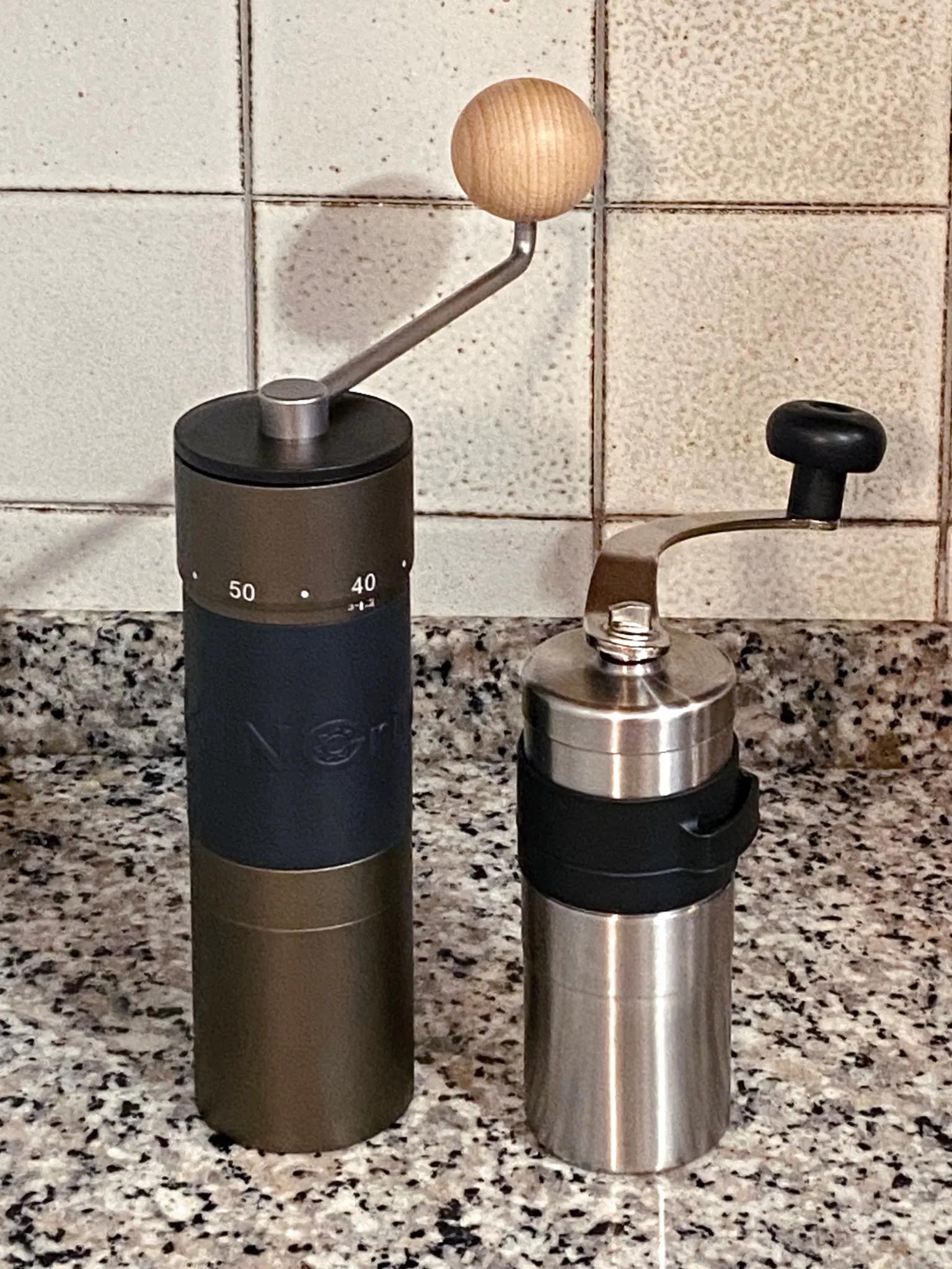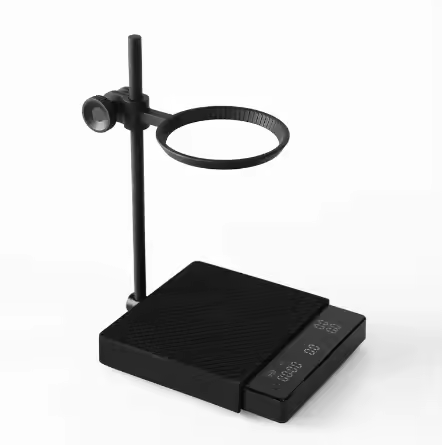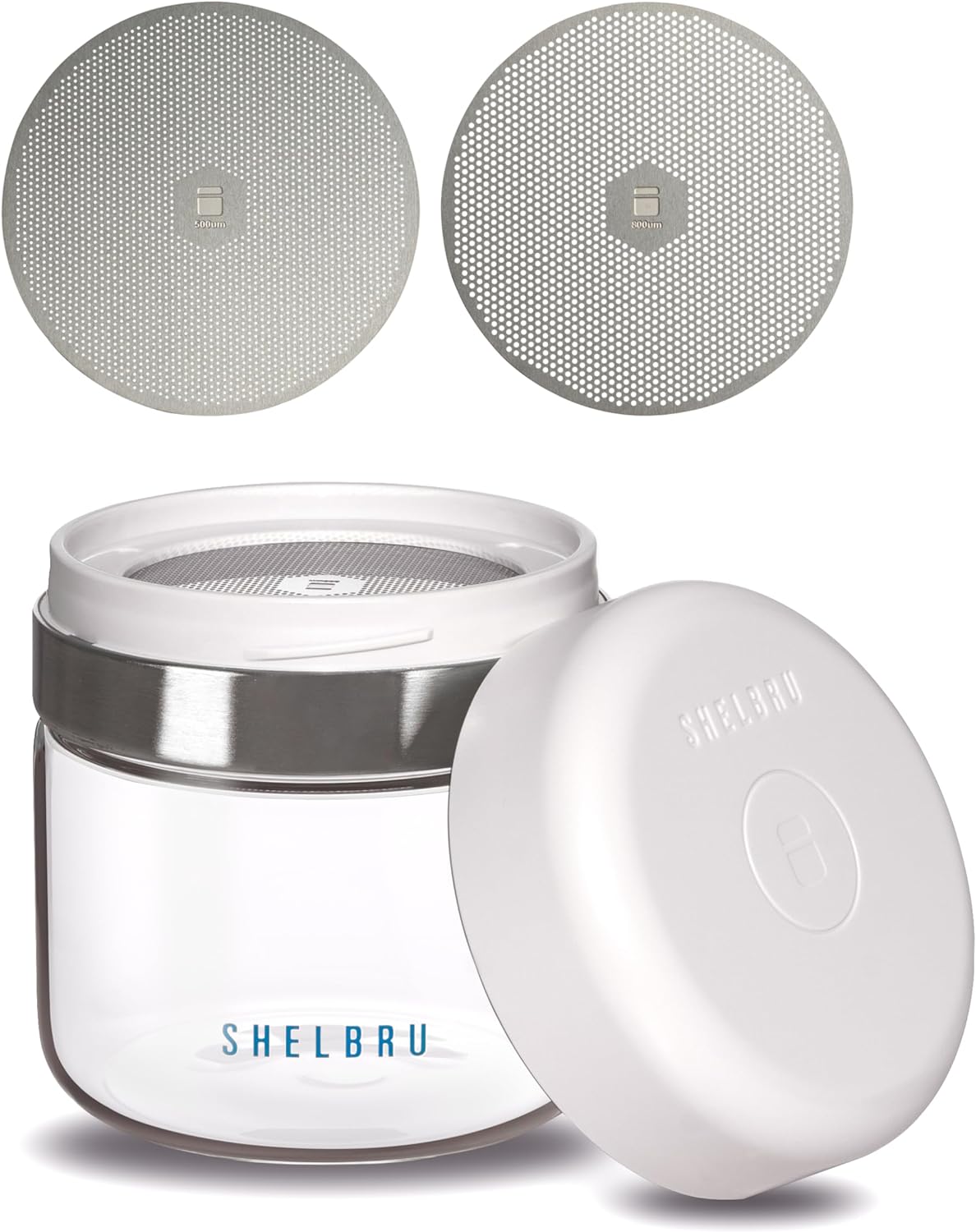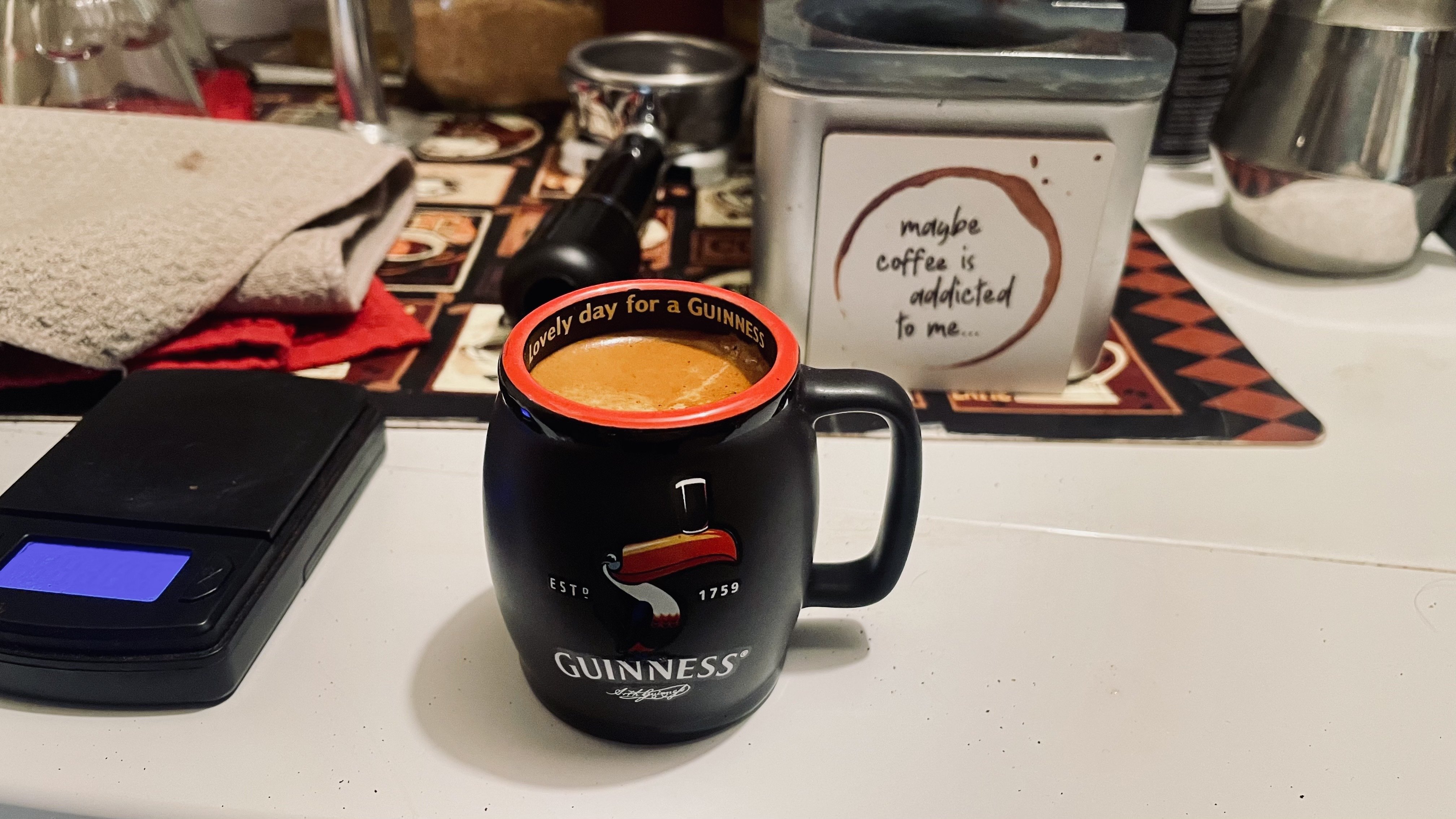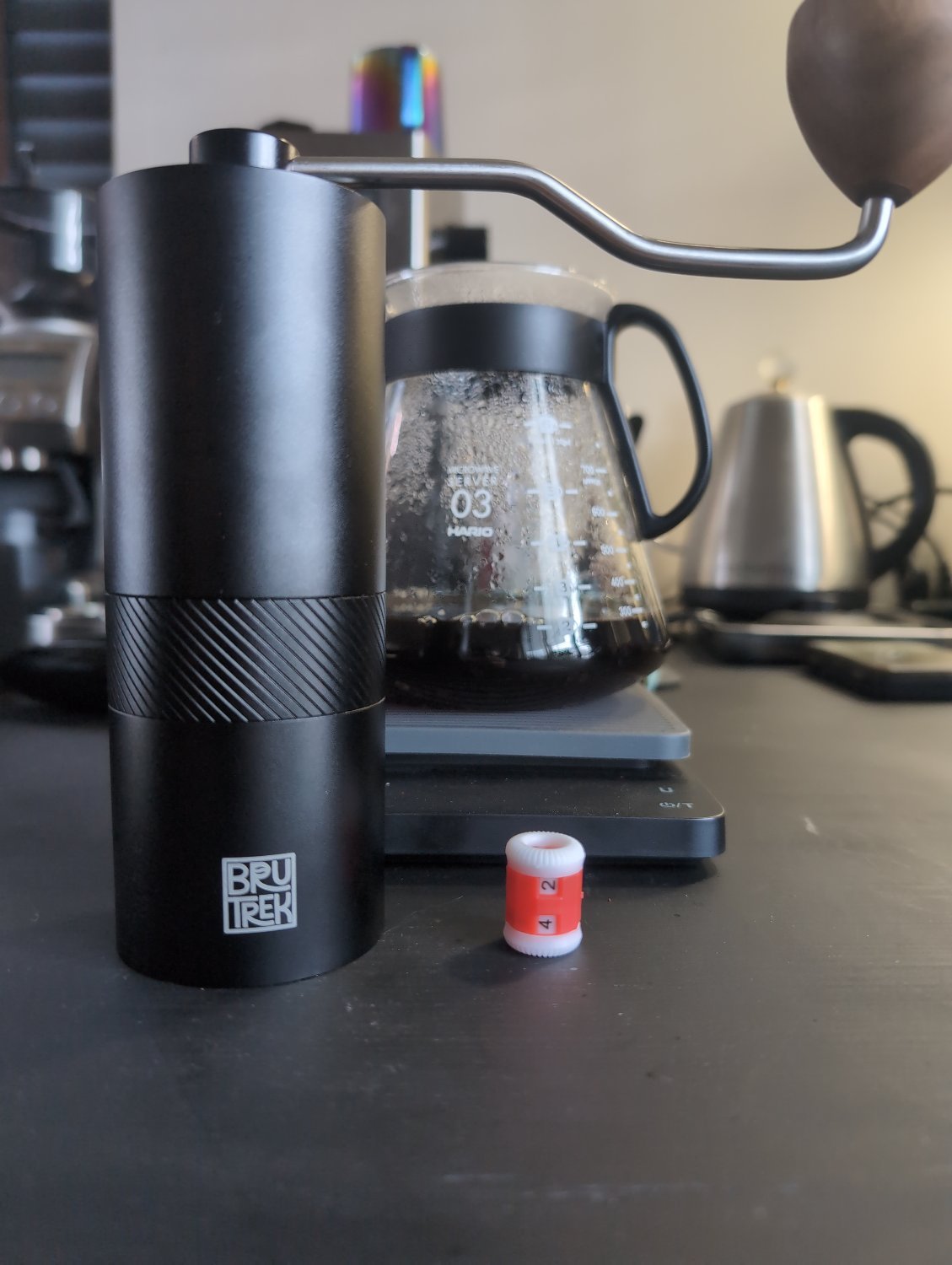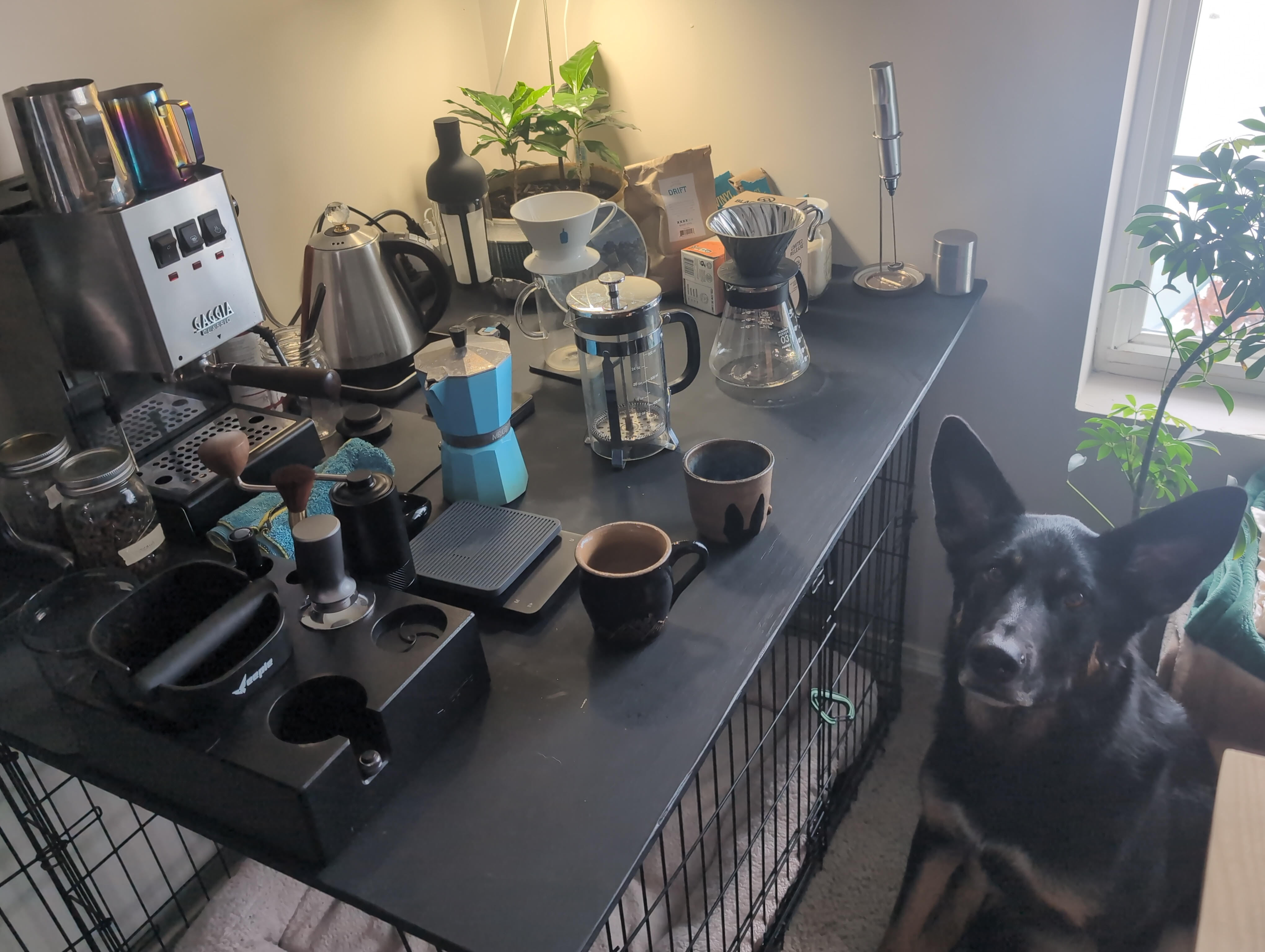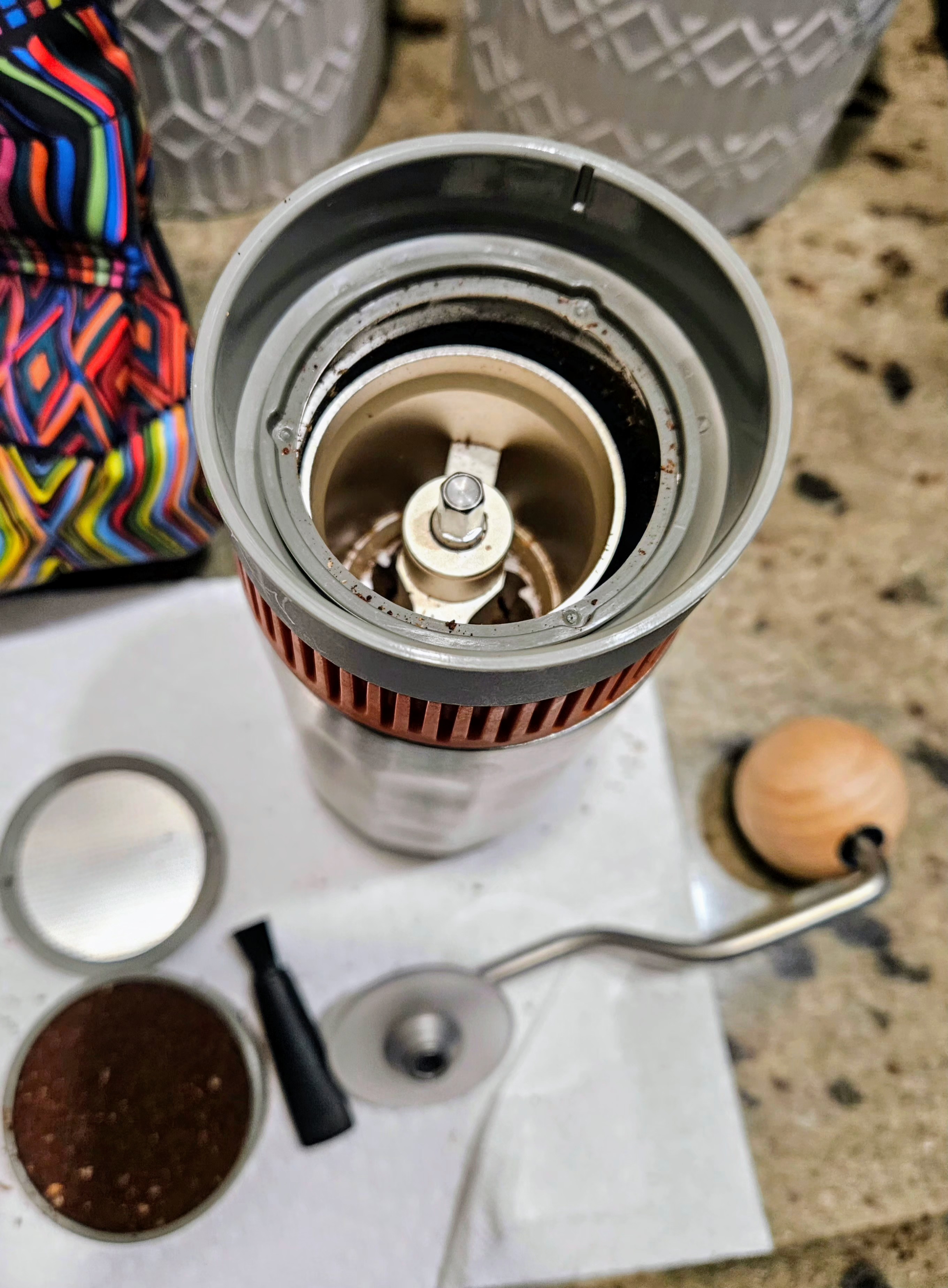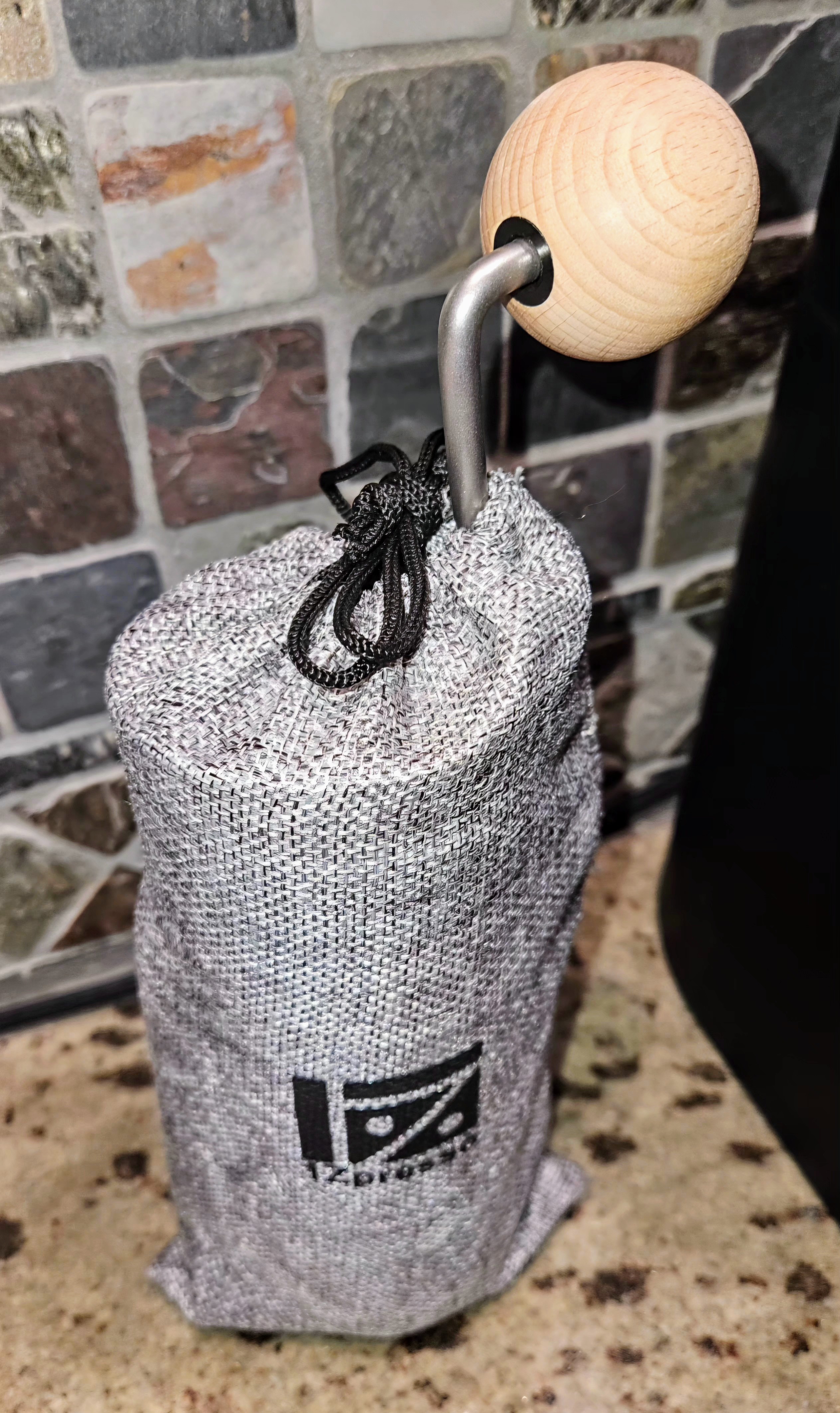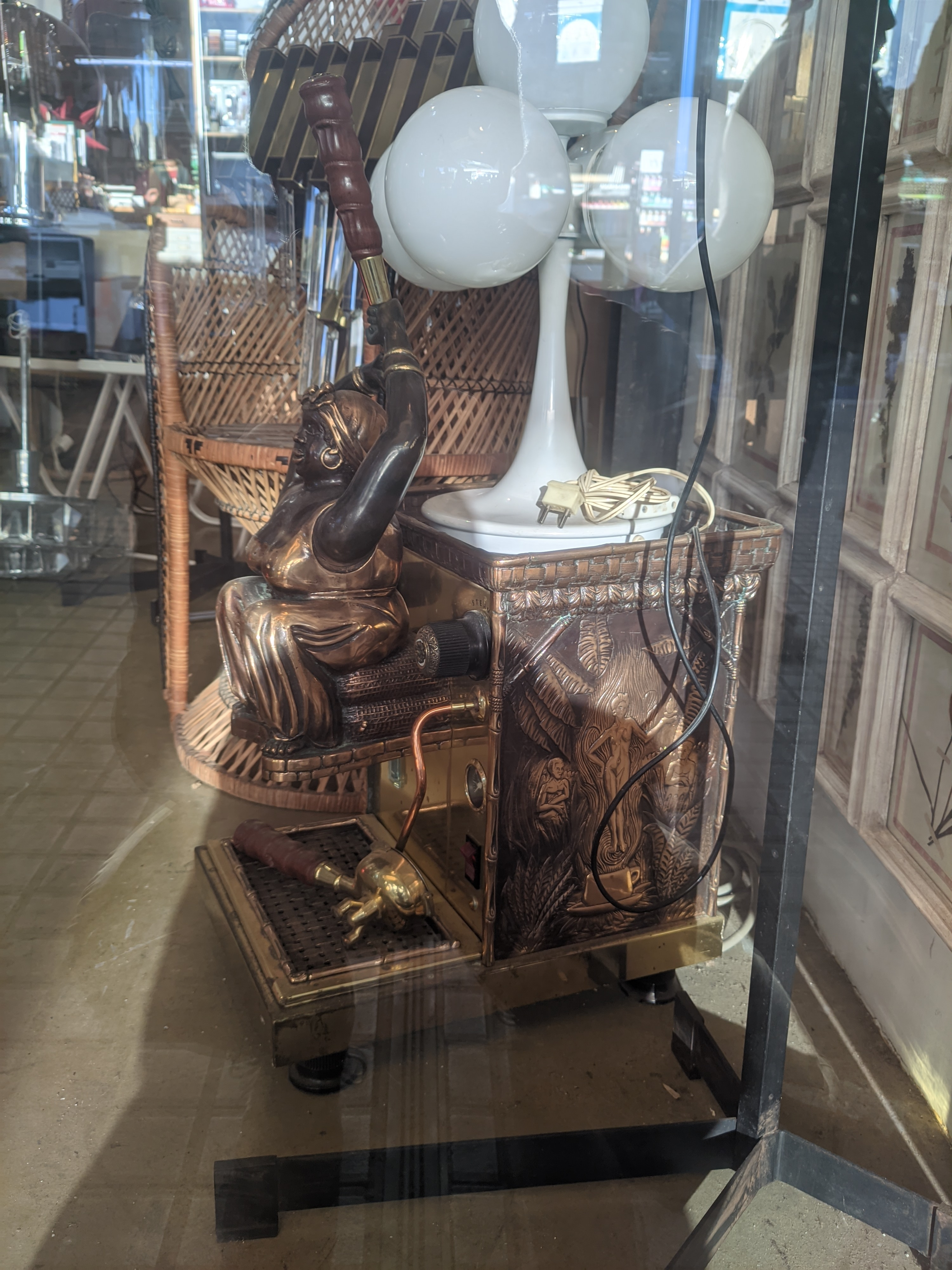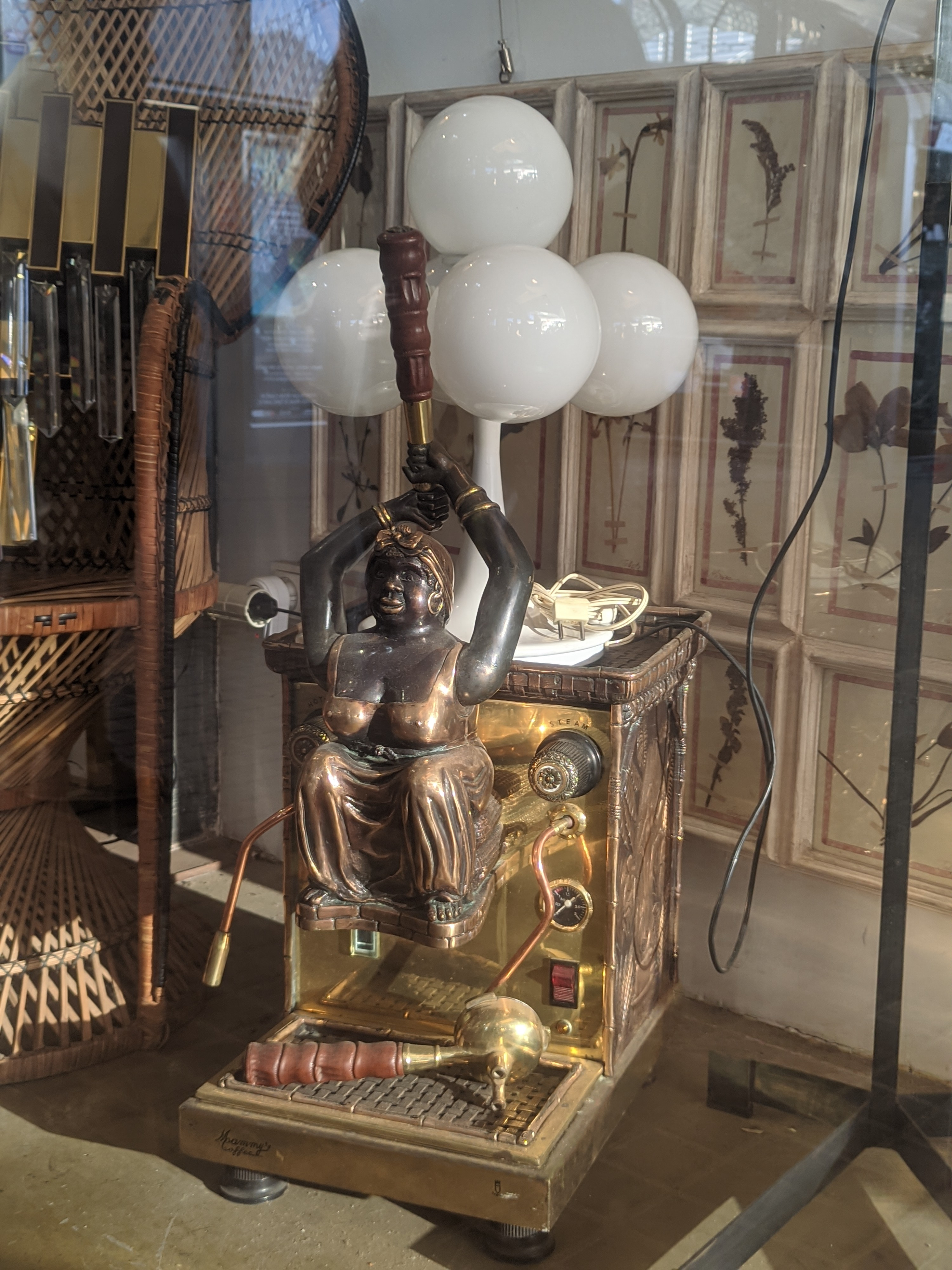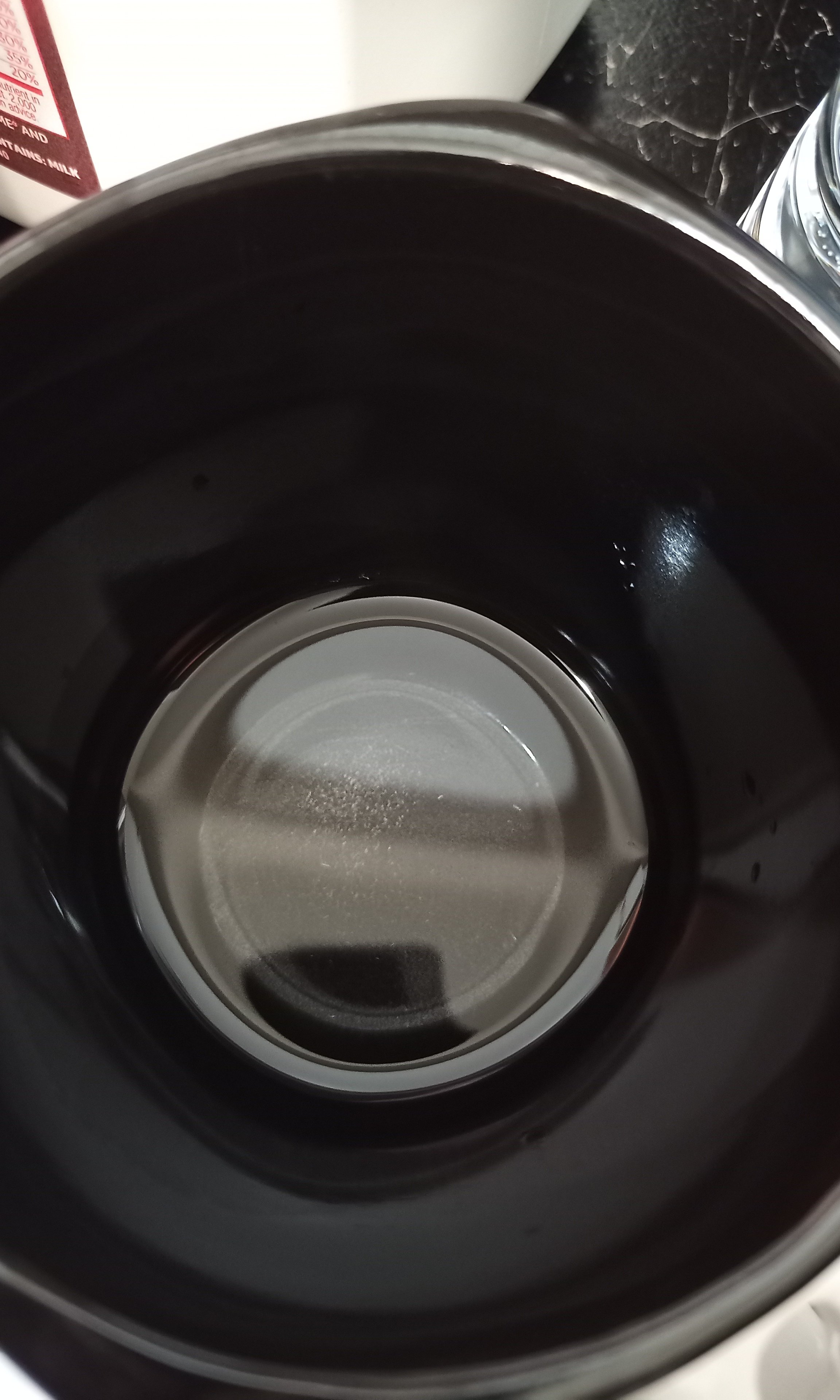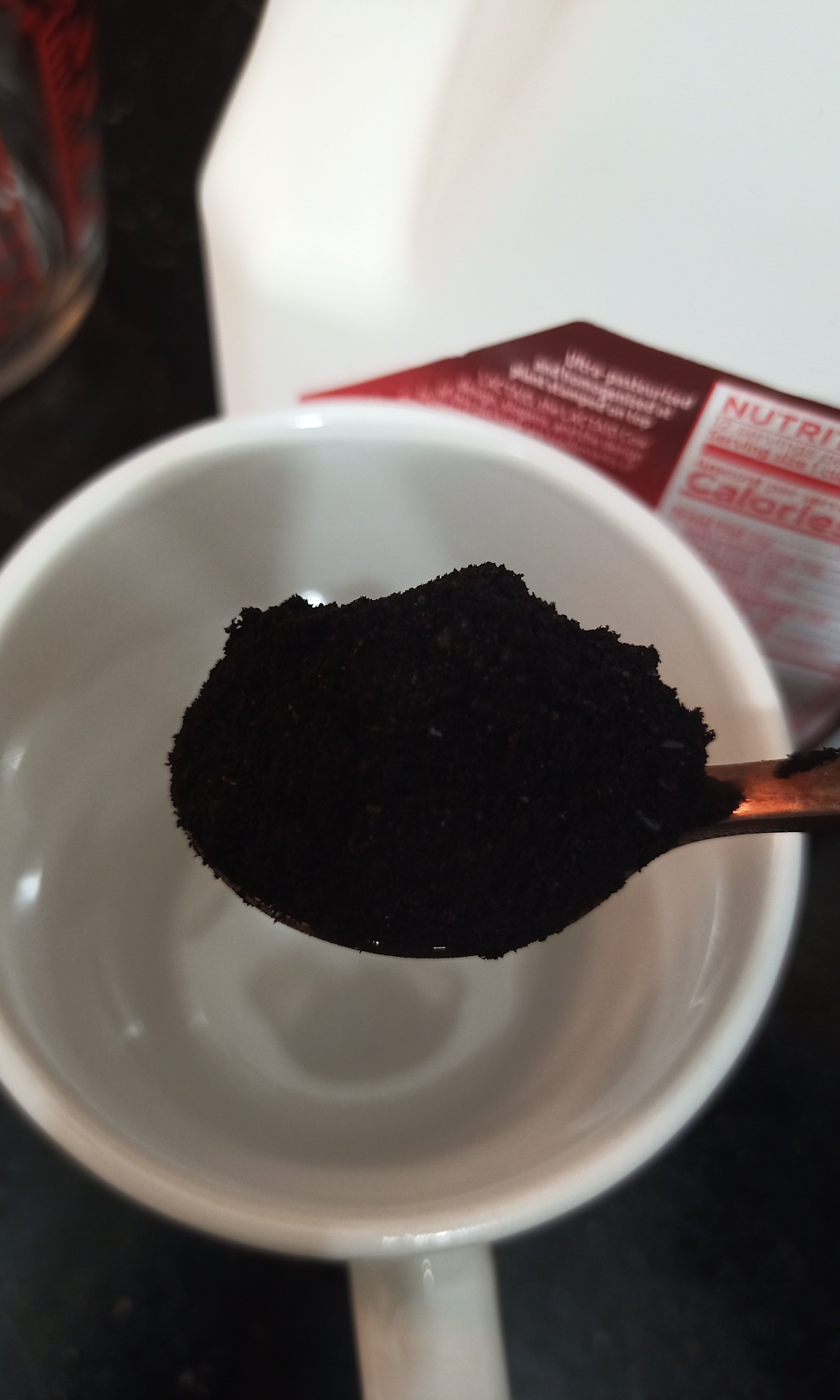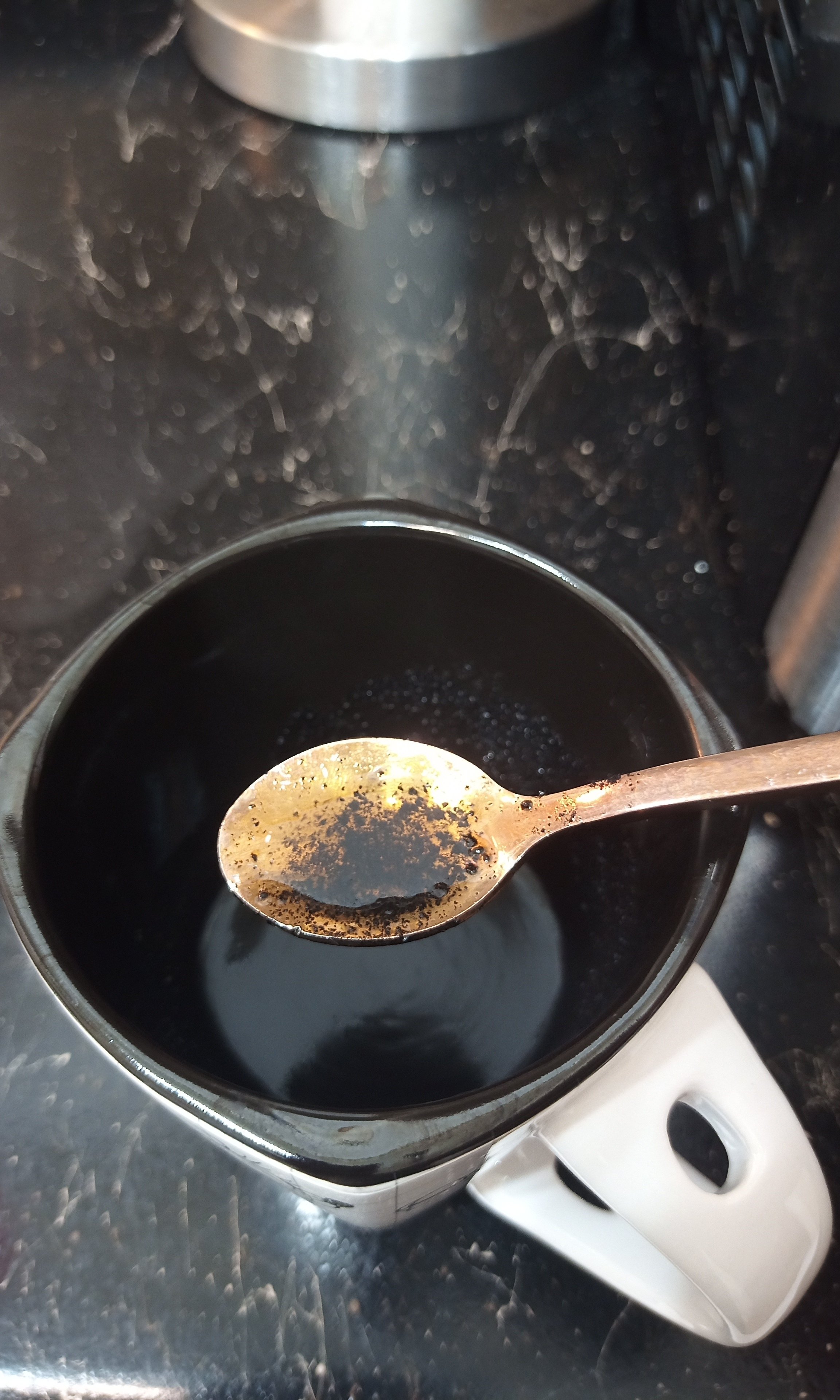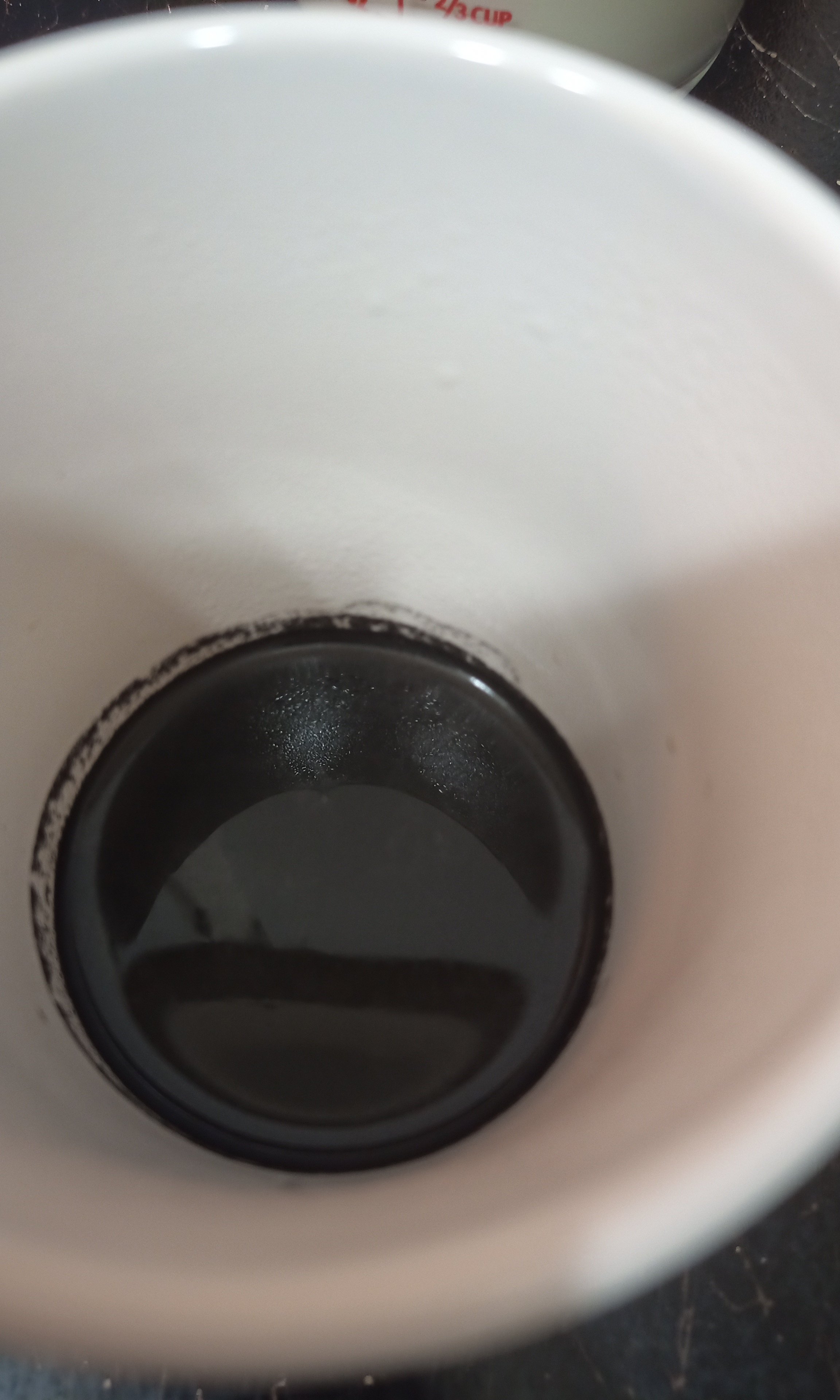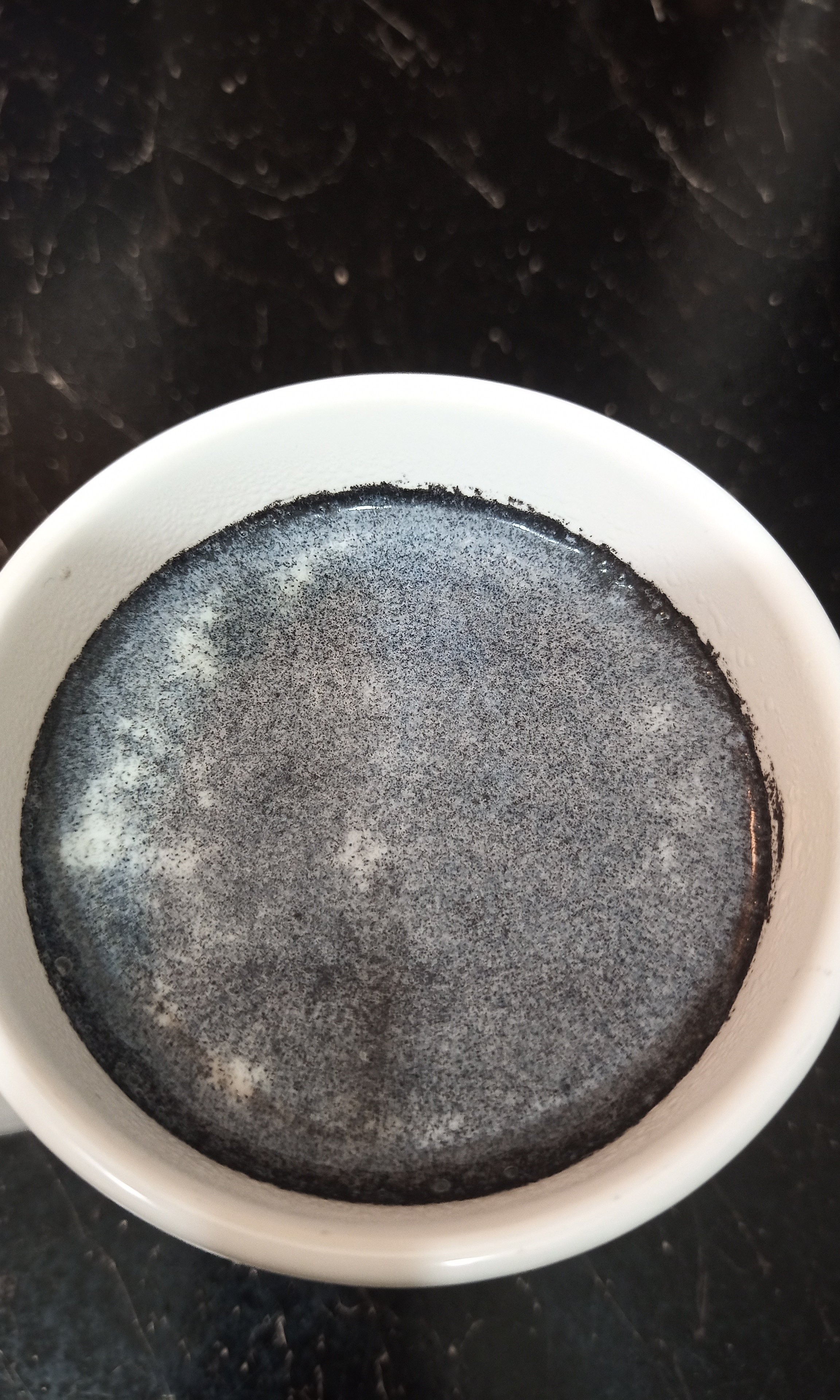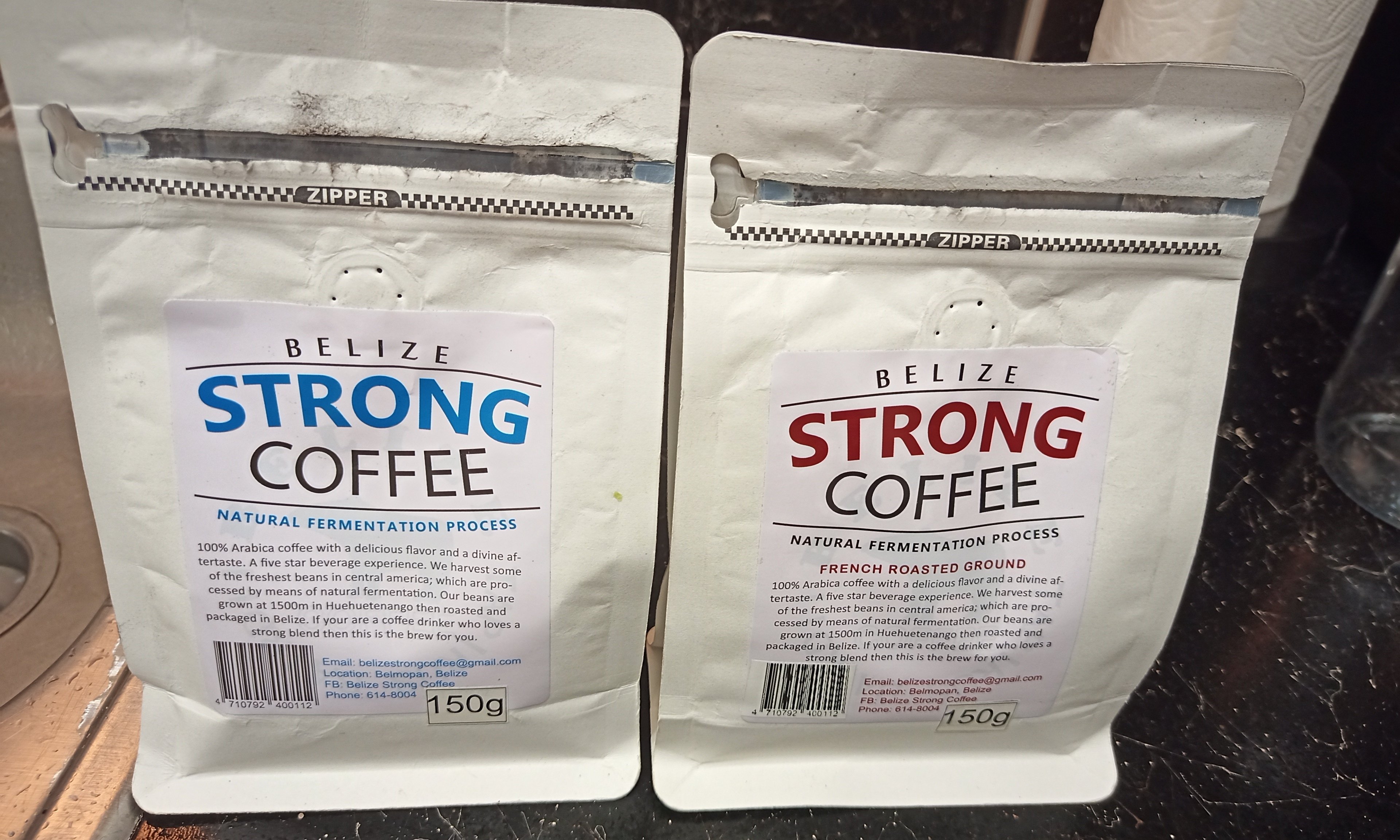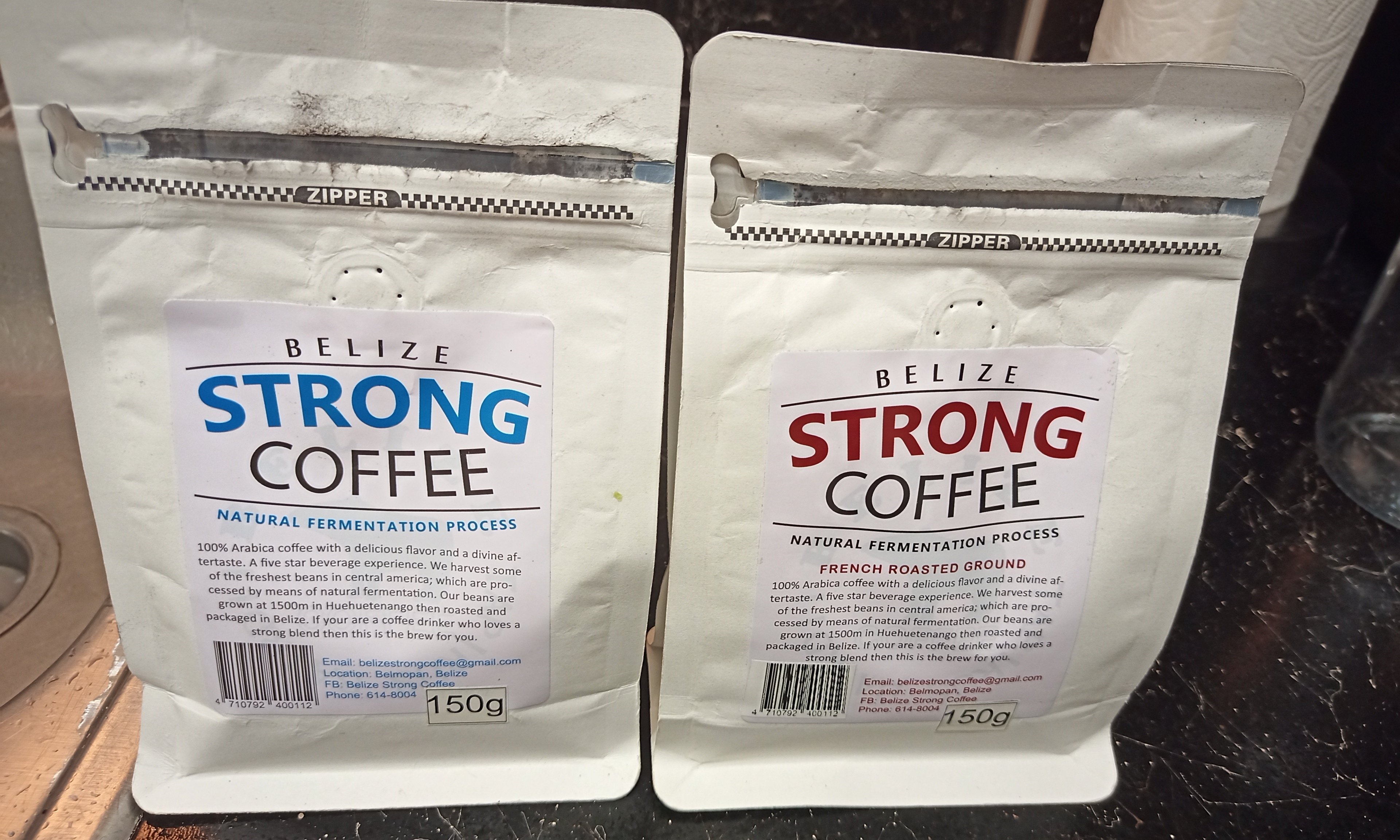tl;dr: I was raised without any caffeine; the first black coffee I tried nearly made me choke; my wife's espresso-milk drinks never strongly appealed to me; for a few years, if I walked into a coffee shop I wouldn't know what to order or what I liked; but now I adore pour-over and care deeply about making a good cup of coffee. Also, I'm a bit sensitive to caffeine.
Alternate title: some of the differences my coffee journey taught me about loving coffee, vs having coffee as a hobby.
Photo: Shows the majority of our (my wife, dog, and I) brewing equipment. You may notice one of the mugs has our dog's ears on it! And that the coffee bar is on the dog's crate. And there's some coffee plant sprouts in the corner.
Disclaimer: I'm particular and have some strong preferences - I don't mean to sound like any of my preferences are “correct” or “superior." :)
For a long time coffee was a contentious point between my wife and I. I was raised in a religion that believes there is some hidden aspect of coffee and tea that is bad for you. Growing up, my family assumed that bad thing was caffeine - though the Mormon church has since clarified that caffeine is not actually what they care about (so now it's a bit surreal to see my family members have energy drinks and caffeinated soda and then assure me that my coffee/tea is unhealthy). Growing up with this indoctrination really turned me off of coffee/tea. I had a strong belief that people would be better off without either. I left the Mormon church as a freshman in college, but never got into coffee.
Then comes my wife; her parents don't drink coffee, but her grandparents drink more coffee than water [bit of an exaggeration]. And as kids, her and her siblings wanted to drink coffee with them, so they'd put a splash of coffee in hot cocoa. When they got older, her siblings and her tried out new coffee gear and experimented and covered a lot of ground for teenagers investing in a hobby on their own.
In our first few years together, I'd complain if she wanted to make a coffee before leaving the house, or suggest she should limit how many cups she had a day, or to avoid it before bed. Nothing too unreasonable, but I was definitely coming at it from the perspective of wishing she'd drop coffee and sell all her equipment. To me, it was a drug that tasted bad and the whole goal was to try and make it as pallet-able as possible. She insisted she liked the taste and the ritual.
One bit of friction between us was I always felt like she was forcing me to try her coffee. Many times it was a new drink that I'd never tried, but most of the time it was the same result - too harsh, or too sweet for me. Some of the drinks really were great, but I didn't see much of a difference between a milkshake and a flavored latte - so it just wasn't something I wanted to start my day with. It was a bit annoying to me - if I didn't like something, why keep encouraging me to try it? In reality, I think she knew there was a drink out there for me, and she was just searching for it. I remember once she got some black coffee from a grocery store and it tasted so bad to me that I felt like it wasn't actually safe to be drinking. It was super dark and chemically. It's what I imagine used motor oil taste like.
Eventually she introduced me to chai tea and london fogs and that was a bit of a turning point in my frustrations. She'd make me something nice on the weekends, and a coffee for herself, and we'd chat on the porch while we drank. And if we ended up in a coffee shop, there was actually something for me to order, even if shops made them way sweeter than I preferred. Fun fact, sometimes if you ask for half-sweetness in a drink, they'll mistakenly double your sweetness. That's happened half a dozen times to us. And sadly, my wife and I aren't the kind of people to ask for a new drink when a mistake was made. Anyway, I think the difference for me with those drinks is they felt less like they were covering up a bad flavor, and more like they were enhancing a flavor (I didn't know at this point that coffee could taste good without milk and sugar).
Some months later my wife got a pistachio latte from a shop and I think it was the first coffee drink that I'd actually order if I were in the right mood. She was excited I liked it and made some pistachio syrup for us and that became my new weekend drink that she'd make for me. Not sure why it seemed so different to me, but if I had to guess I'd say something like the pistachio adds complexity that pairs well or lifts up the coffee and covers up some of the milk flavor. My wife tuned in my preferences and we learned that I like some bitterness, not a lot of milk, and I don't like the milk too foamy. Basically a flavored cortado.
Still though, it wasn't really a drink I was excited to have regularly. It was a bit too rich and sweet for me to feel like I'd ever want a second cup. The caffeine buzz was all that kept me drinking them on weekends.
Some time later, my wife and I were in L.A. and she took me to a Blue Bottle Coffee shop. It was somewhere that'd been on her bucket list. She got a cold brew and after I tried it I went back and ordered one for myself. I loved it. It wasn't very sweet, wasn't harsh at all, and had some great flavors. It was complex. The flavors evolved from the start of the sip to the aftertaste. It wasn't just brown water like I was expecting. When we got home my wife found an imitation recipe (it has chicory in it, which now seems odd to me) and that became my weekend drink. Cold brew also became my go-to when at a coffee shop.
My wife and I had fun with some experimentation, different cold foams, adding cinnamon or other holiday spices, etc. But learning to make cold brew myself never really appealed to me. Something to do with requiring foresight I think. Plus, it seemed complicated and I had my wife around to make it for me anyway.
Then months later, I see this post: https://lemmy.world/post/22062403 - it makes me chuckle, and I wonder what pour over taste like (I use Arch, BTW). I asked my wife, and she made me some. It was great. Not harsh like I expected. A lot of the complexity that we were getting with cold brew. Nothing like the black coffees I'd tried in the past. This surprised my wife, since I'd had such bad reactions to black coffee in the past. I guess she put a little cinnamon and sage in it that first time. The next time she made it I watched and asked questions on why certain things were done, and how it compared to other types of black coffee. I wanted to learn to make it myself so I could make it for some of my family members that also left the Mormon church (they liked coffee a lot more than me). That led me to doing a LOT of research.
The research went on for weeks (it's still going on, really). There are so many variables to coffee. It's been fun to wade through. Every cup turned out so different at first. And I didn't yet know why. I was motivated to improve. I took notes, got my own pour over equipment (I really like my metal Hario v60). I invested in a nice hand grinder since I'd always disliked how loud my wife's electric grinder is. The only problem was I couldn't really handle three cups of coffee in a row while I experimented/practiced.
I would have never guessed how much I'd enjoy some of the cups we made. I had no idea about things like bean freshness, grind size, the difference between strength and extraction, or how insanely different beans from different roasters were. As of late, I find myself surprised that I'm investigating how minerals in water affect coffee; or helping my wife portion, vacuum seal, and freeze beans. I shouldn't be super surprised - when it comes to cooking, this is how I am. I sort of dive deep, and do a lot of research, experimentation, and practice. But with coffee, I never expected to enjoy it enough to even want to make it myself.
My wife and I had a blast trying new beans. We recently bought six types from a roaster in a nearby town and they're all super different. It was fun trying to dial them all in, and picking out notes, and comparing them. My favorite so far distinctly reminds me of hiking in the woods in winter in the snow. I'm not exactly sure why, but something about the cold air, tiny bit of pine, and what I think is bearded lichen. The winter part might just be because the forest has a lot more smells in summer, but in winter there's just a bit of earthiness that remains.
Searching for a good decaf bean has been fun too. And wow is brewing good pour-over decaf hard. I constantly was over-extracting. I wondered if it was even possible. But we found a good decaf bean and a recent video I watched by Lance Hedrick talked about doing your bloom with lower temperature water. My last few cups of decaf have been super good. When the kettle's heating up, I take out some water as it gets to 170F, then wait for the kettle to get to 190F, do my 30 second bloom with the 170 degree water, and the rest of the pour with 190 degree water. Going lower than 170F for the bloom, I found I could even under-extract decaf. And different decaf beans from different roasters require big changes sometimes.
One day I thought to myself “so this is why people like coffee.” It's complex and versatile. I was excited for Thanksgiving to chat with family (mostly on my wife's side) about how they liked their coffee, how they prepared it, what tips they had, what beans they liked, etc. I sort of assumed everyone was like my wife and had loads of equipment and knowledge. It was a bit of a let down.
I had a conversation with a friend of mine who also left the Mormon church. I knew they loved coffee, they were drinking it before they even left. I was excited to talk about my process, and to learn from them since they were years ahead of me and my journey. But they kind of chastised me a bit. They thought coffee wasn't really meant to be all that good. A bit of “bad” was one of its qualities. That it was supposed to be grungy and harsh. Coffee was a vice to get you through finals week. An experience. A friend. Good memories. But not really a treat. When they wanted to make a special drink, they made Cowboy Coffee, which I'm told taste kind of awful (though research I just did says that if done right, it can make a smooth cup). My friend went on a bit of a rant, it was kind of romantic or maybe idealistic, and I'm not doing it any justice. I understood where they were coming from, and that coffee to them was different than it is to me, but yeah, generally, I didn't relate much. I want an interesting and pleasant cup with a lot of flavor evolution and tasting notes.
I asked another friend for tips and found myself biting my tongue as I realized that they knew nothing about grind size or extraction amounts. Even my wife's siblings seemed perfectly content with some quick and convenient coffee rather than putting in work for a finer cup. Everyone did things by feel, not even measuring out how much coffee or water they were using. I felt like a snob. I didn't want to insult anyone or point out what they might want to consider changing. And I didn't enjoy the cups they made for me.
It was weird because the research I did (and my wife) made me think everyone went through a complicated morning process. But there obviously aren't any ASMR coffee preparation videos where someone literally just turns on a machine and waits. Still, some of these people who I think are missing out on high quality coffee - probably love coffee more than I do. The distinction I've made in my head is that some people love coffee, and others have coffee as a hobby. I wrongly assumed that if you love coffee, you'd be drawn farther and farther down the rabbit hole until it was a hobby for you. Just a funny observation to reflect on.
So for the holidays I wanted to make some coffee for people, and hopefully impress/enlighten them. I packed my pour-over things, and… was wildly unsuccessful… I'm not sure what made the biggest difference, but I think not having a goose-neck kettle was a big issue (I was causing too much agitation when pouring?), also the scale I used definitely wasn't very sensitive. And there was a big altitude change (over a thousand feet). By our last day visiting, I was able to make adjustments to get a cup that showed some of the tasting notes of the coffee, but it still had some harshness and wasn't something I'd ever describe as delectable. I was worried the beans were bad or something, but now that we're home I'm getting good cups again. Hopefully with more practice I'll be able to make a good cup while away from home. Or hopefully make some for them when they visit us. But I don't feel strongly that they'd get as into it as me. Most likely they'd just say to me, “yeah, that's a pretty good cup of coffee.” But still, I want to impress!
I've heard people say that coffee is an acquired taste, maybe it is, but I don't really think my taste for it has changed. My perspective definitely has, but I think I just found a type of coffee that's fun to brew and is interesting/pleasant to taste. Maybe I'm more tolerant to bad/not-specialty coffee now, but I wouldn't say by very much. And I don't enjoy bad coffee any more than before. A problem with coffee I think is that it's hard to get into because there's just so much to it.
Overall, what I've learned is that some people see coffee as a hobby. My wife, coffee influencers online, and now myself. It's just kind of fun, interesting, and if you do a good job - rewarding. To other people coffee is a productivity thing. To others it's a social thing. A ritual. A meditation. Or a sweet treat. And to the Mormons, it's a gateway drug that will make you lose your good standing with the church, preventing you from entering the temple, draining the light from your eyes, and marking your unwillingness to be obedient. (That's a joke, but it's also kind of true).
Bonus section - my experience with caffeine as someone who rarely had it until they were an adult: Caffeine gives me a pretty noticeable buzz. It makes me super talkative and puts me in a great mood. Even before I had drinks that I enjoyed, I still loved getting a caffeine buzz with my wife while we chatted. Whenever we were going on a road trip, I'd make sure we had coffees and it'd make the drive a lot of fun. Unfortunately, I'm a bit sensitive to caffeine. I can't really have more than one cup, or I feel some anxiousness and tightness in my chest (something I've never felt before or felt without caffeine). And it lasts a LONG time for me. I think I'm one of those people who metabolizes caffeine slowly. A buzz can last me around 2.5 hours, and having too much caffeine lasts longer than that. And even one cup seems to have a large effect on my sleep, no matter how early in the morning I drink it. Most people can stop having caffeine at like 2PM and their sleep will be fine, but I find that if I have any after 10AM then that night I'll be lying in bed awake (even if I exercise that day). And even if I have caffeine earlier than that, I still sleep poorly and wake often through the night. I've never had any sleep issues my whole life, so it's a pretty noticeable trade off for me. For a while, I thought if I just had caffeine every day my body would get used to it. Maybe it did in some aspects, but my sleep was getting worse and worse as I went on. One night I got less than four hours of sleep and decided I should just drink decaf. Fortunately, my decaf is pretty good. Not as good as my normal coffee, but I do think my decaf is better than any black coffee I've gotten from a shop (humble brag). When I have caffeinated coffee, I usually get a small, or share it with my wife, to limit my caffeine. I do wish I were fine having a few cups of normal coffee a day, but for now I think caffeine will just be a special treat for me.
Some other loose notes of mine:
- After thanksgiving, my uncle made some drip coffee and wow was it nice to sip on after a heavy meal. Kept me up until 1AM though.
- I hope decaf gets taken more seriously - there's just tons more options at a roaster for caffeinated beans. But usually only one decaf. I've found some good ones, but exploring beans is fun for me.
- Maybe it's just differences in coffee, but I think there's been times where I order cold brew and they give me iced coffee? I'm not confident enough with my discernment skills to be sure, but I'm pretty sure I can tell the difference. I'm not super picky about it, but it feels a little bit crummy if so.
- I wanna try other drinks from around the world now (on my list are Yerba Matte, matcha, some strange teas, guarana, and a bunch more types of coffee - let me know if you know of any cool drinks!)
- A bit ago I tried Starbucks drip coffee and it was very meh to me. I probably should have added cream and sugar, but I never need to do that for my cups (the ones that come out well, at least). I've had plenty of good brewed coffee from other shops, I think I just maybe expected Starbucks to have higher quality. I'd describe it as too dark for me (even though I got the medium roast) and a bit empty and tiny bit harsh. Not really bitter, but more like it stung the back of your throat - which happens to my pour-overs when I over-extract them.
- I also tried some gas station coffee to see if I'd think higher of it now that I like other coffee - and I did not. I was able to finish it, but only barely. They actually had a bunch of options and someone noticed I was reading all of them and they convinced me to try their favorite blend. I'mma sound crazy trying to explain it - it's like it was somehow weak/watery, while also being strong and harsh. Like I could tell it was coffee, but I wondered if there was some food-fraud going on because something seemed wrong. Like some fundamental piece of the coffee was missing and replaced with unpleasant things.
- My wife says this post makes it sound like she only drinks sweet coffees - but really that's just because those were the ones she was most likely to have me try in the hopes I'd find a drink I liked.
Thanks for reading!
